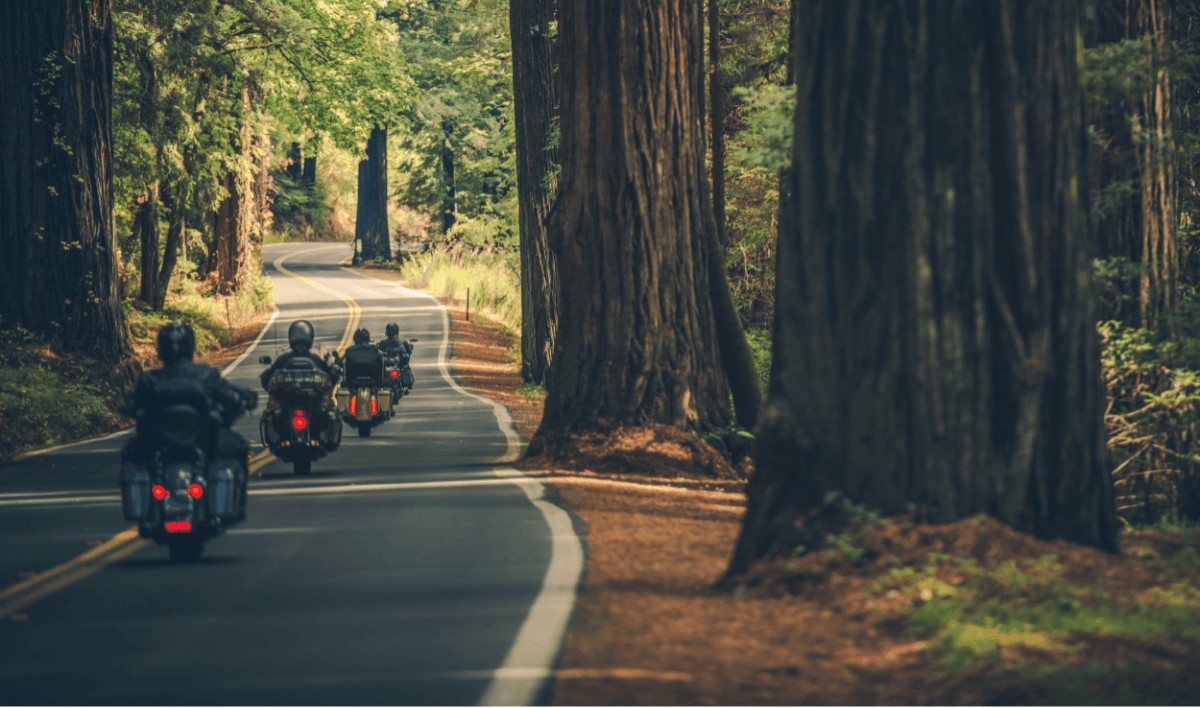Improve Your Motorcycle Riding Skills in Canada
If you’re planning to ride a motorcycle in Canada, you’re required to gain enough experience and knowledge about the road rules before you acquire a license. In other words, you must pass a written test, motorcycle skills test, and the road test before you acquire a full motorcycle license. But that’s not all; you must go through a learning process where you ride the motorcycle under limited conditions before you qualify to take the road test.

In this article, we’ll discuss what you can do to improve your motorcycle riding skills as a learner before you take the road test. However, these tips could also apply to fully licensed motorcycle riders who want to brush up their motorcycle skills and knowledge. Let’s get down to it, shall we?
Study the Motorcycle Handbook
Just because you’ve passed the written test and acquired a learner’s license, it doesn’t mean you shouldn’t re-read the motorcycle handbook. Not only will everything that’s covered in the motorcycle handbook be relevant during the road test, but you will need to refer back to the handbook to familiarize yourself with the road rules and regulations.
In addition to that, the motorcycle handbook includes tips on how to ride your motorcycle under different conditions while prioritizing safety. For instance, if you want to know how to ride in bad weather or emergency scenarios, you can read the handbook. Similarly, the motorcycle handbook includes tips on how to perform maneuvers such as overtaking, parking, lane changing, group riding, and making turns.
Enroll in a Motorcycle Safety Course
Studying the motorcycle handbook will help you gain the knowledge to ride a motorcycle but you need to apply for a hands-on training course with experienced instructors to take it to the next level. We also recommend the motorcycle safety course if you’re visiting Canada with a foreign license and you want to familiarize yourself with the rules.
The safety course will include track days where you can practice riding a motorcycle in a controlled environment while a professional trainer critiques your riding skills until you’ve improved and gained confidence. Besides that, you could practice different motorcycle maneuvers such as emergency braking, counter-steering, and turning at an empty parking lot when you’re alone without the pressure of an instructor watching your every move. If you’re stuck trying to complete a maneuver, you can always revisit when you take a class with an instructor.
Ride As Much as You Can
If you have an intermediate stage or a novice license, you should ride as much as you can in different road conditions — unless there is snow or ice on the road. This will help you to develop situational awareness and muscle memory through experience to become a better rider. For instance, if you ride your motorcycle in the rain, you will learn traction control skills that you wouldn’t have learned in a controlled environment. Similarly, if you’re riding a dual sport or a dirt bike, you can head out to the mountains until you’re confident with your skills.
However, remember to learn at your pace and it may take a few months before you’re confident. Most Canadian provinces don’t allow beginners to acquire a full motorcycle license until they’ve driven for at least two years with a learner’s permit and a novice license.
Start With a Motorcycle You Can Handle
One of the biggest mistakes you can make as a beginner rider is buying a motorcycle that’s too powerful for you to handle. A safer way is to start with a 125 cc or 250 cc motorcycle and upgrade to a more powerful motorcycle after you’ve gained more experience and improved your riding skills.
Alternatively, you can start riding dirt bikes on motocross tracks before you proceed to train on paved empty spaces and parking lots with a street bike. The advantage of riding in the dirt is that you will learn many different skill sets while slowly building your confidence before you start riding a street bike. In fact, you may learn more on a dirt bike than you would on a street bike.
Invest in High-Quality Motorcycle Gear
Motorcycle gear doesn’t just protect you from injuries but they can make you more comfortable while riding so you can pay more attention to your surroundings. For instance, if you’re distracted by wind noise at highway speed, you could wear earplugs to reduce the noise. A good quality pair of motorcycle gloves won’t just keep you warm but they help to improve your grip and dampen the vibrations. Of course, don’t forget to wear a full-face helmet which will come in handy to protect you against insects and debris flying on the road.
Drive Defensively
The ultimate test of a better than average motorcycle rider is whether or not they can ride defensively. Unfortunately, expecting other drivers to do what you think they’re supposed to do because they’re following the rules will put you at a higher risk of an accident. In fact, driving defensively like every driver on the road is blind and likely to break the rules will make you a better motorcycle rider. This mostly involves improving your situational awareness when riding so you can respond to whatever is happening and prevent an accident. Additionally, you can become a better rider if you train yourself how to react in emergencies.
